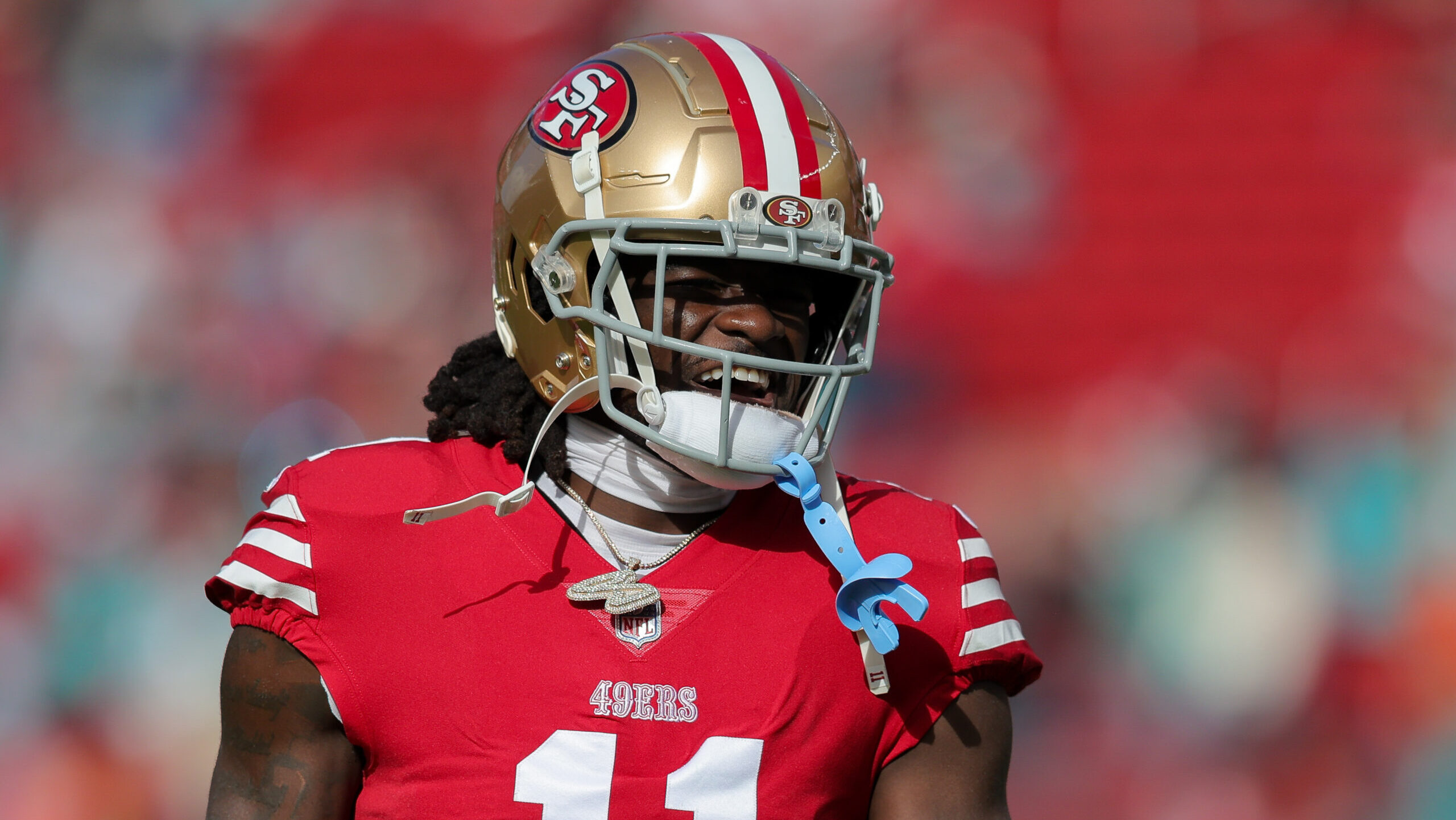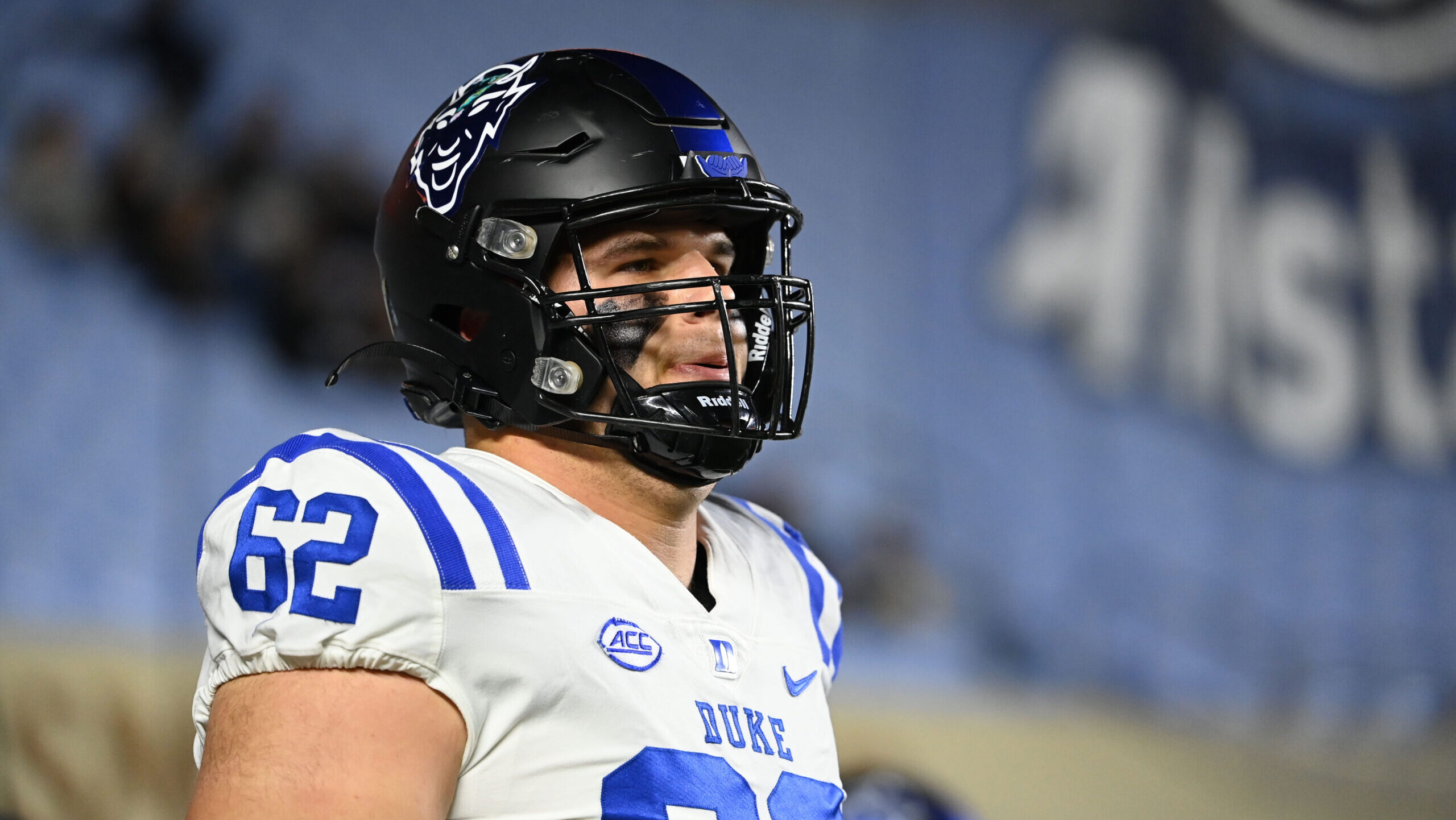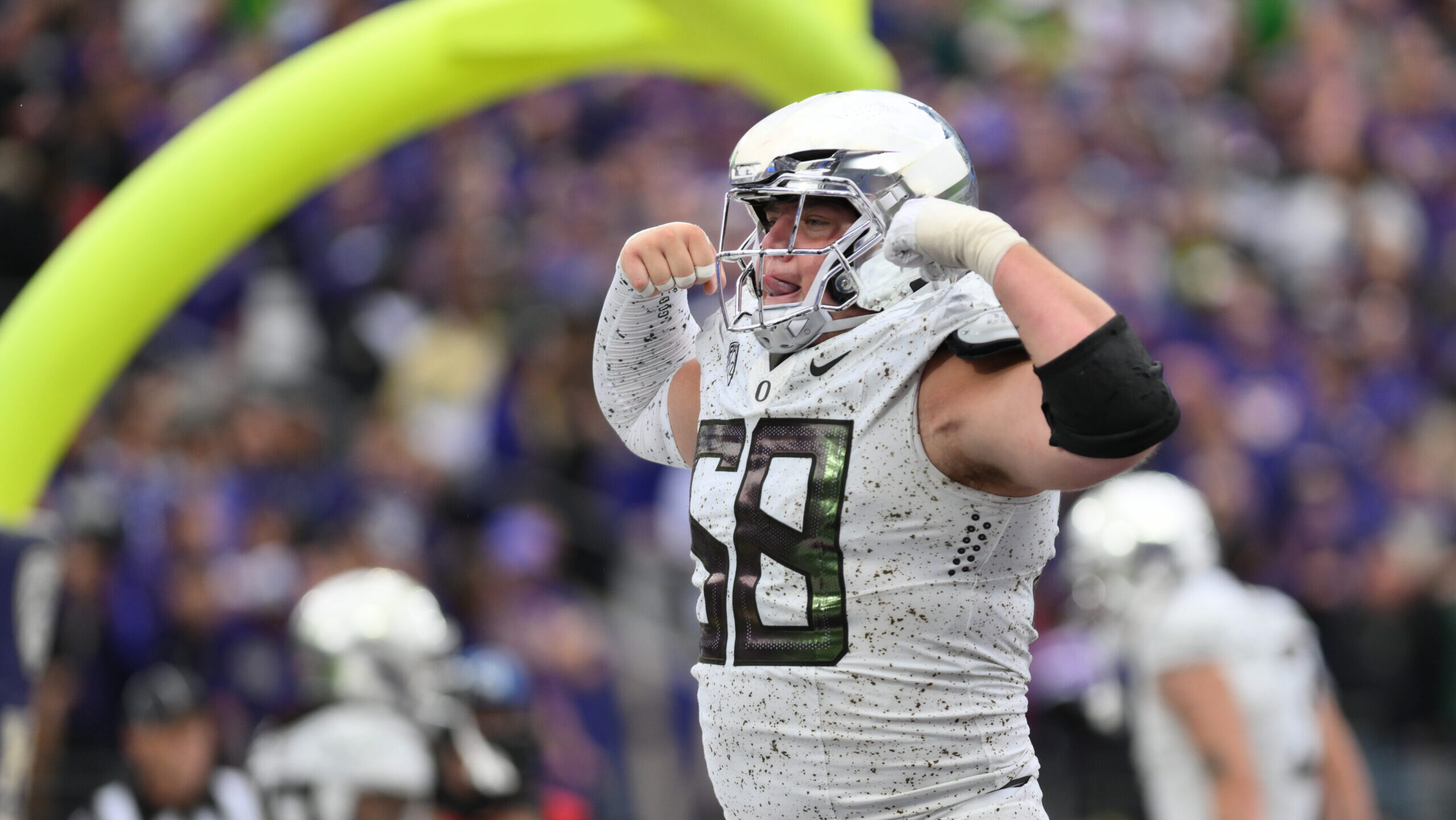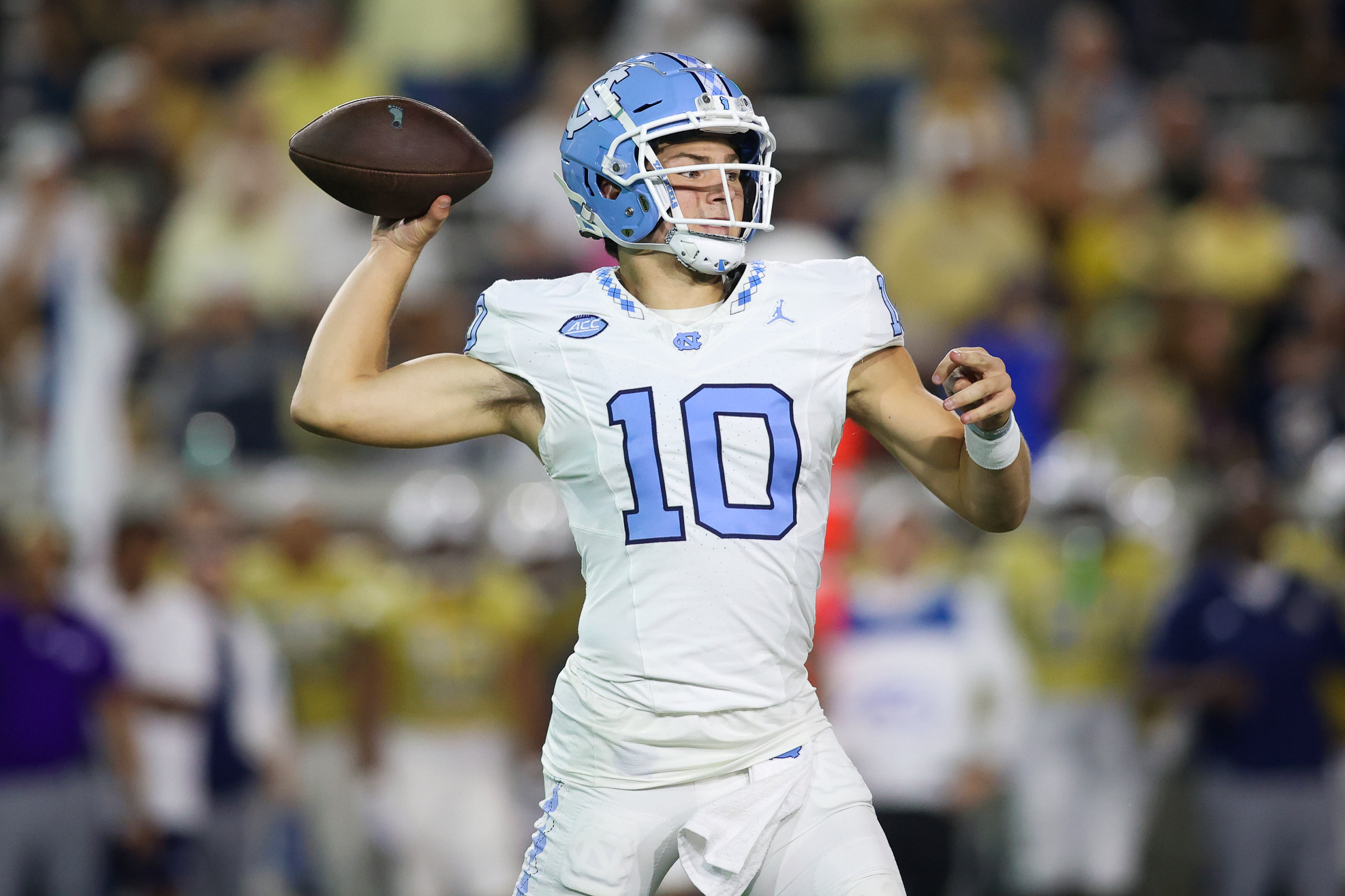Analysis
4/24/23
10 min read
2023 NFL Draft: It's Buyer Beware for Carolina Panthers with Bryce Young
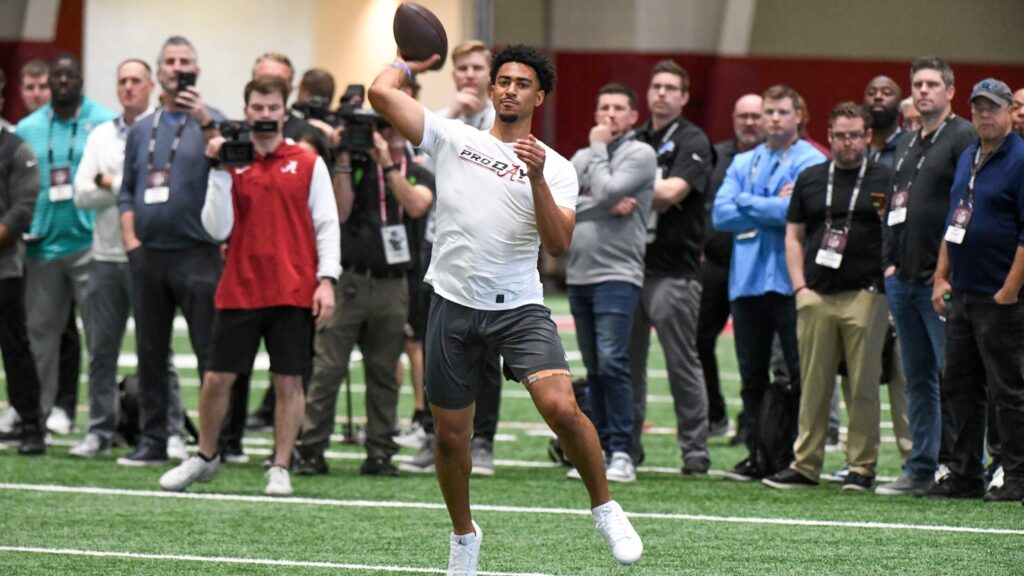
When I was asked to evaluate Alabama quarterback Bryce Young, the presumptive first pick in this week’s NFL Draft, it made me think back to when I first scouted collegiate players. It was 1999, and then-St. Louis Rams coach Dick Vermeil asked me to evaluate potential first-round picks —a group that included wide receiver Torry Holt and running backs Ricky Williams and Edgerrin James.
But it also included a laundry list of quarterbacks.
Donovan McNabb was on it. So was Akili Smith. And Cade McNown, Daunte Culpepper and Brock Huard. Essentially, everyone but Tim Couch. Everyone knew Cleveland would make him the first overall choice, and I was told not to bother. So I didn’t.
When I finished, I told the Rams there were three players I thought could be elite at the pro level: Holt, James and McNabb. James is in the Pro Football Hall of Fame, Holt has been a four-time finalist for Canton and McNabb was the only quarterback on that list to reach a Super Bowl. He also went to five conference championship games in eight years.
So, what do I think of Bryce Young? I didn’t know much about him until I studied him the past few weeks. From what I’d heard, I expected to see Joe Montana-like performances – with precision passing, quick decisions, keen awareness and big plays.
And I did.
But not enough to convince me that he should be the first pick in the draft. In fact, if I were to advise Carolina what to do with the first pick on Thursday night, I’d make my message simple:
Buyer, beware.
Let me explain how I reached that conclusion.
The Setup
I have four steps when evaluating players, and it starts with what I call The Setup. I want everything I need to know at my disposal. So I have my Surface Pro connected to a monitor, a Cowboy Remote in my right hand, five colored pens on my desk, down-and-distance charts, evaluation sheets and game play-by-plays close enough to peruse. And, of course, the player’s height, weight and speed are always in front of me.
I typically dissect four games because anything more dilutes the process. Talk to any scout or personnel director, and they’ll tell you: If the first three views are similar, don’t go to a fourth. I’d say that’s pretty accurate. Nevertheless, I always do a fourth as a crosscheck.
Analytics
To me, analytics mean historical data, and the key for a player are three things:
- Height
- Weight
- 40 time
You’re looking for comparables, and that’s where the historical data comes in. At the end of a year, I look at all NFL players who graded Blue, Red or Purple by down and position. Let me explain. Blue and Red are players who will win for you; Purple are players you can win with.
Big difference.
Anyway, there were 91 quarterbacks on NFL rosters last year, and, truthfully, I thought only 17 played Purple or better. I wanted to eliminate 10 percent of that group, so I deleted the tallest and shortest for height, heaviest and lightest for weight and the two slowest 40s. I first tossed out the tallest (Justin Herbert, 6-6 1/8) and the shortest (Brock Purdy, 6-0 5/8) – leaving me with Trevor Lawrence (6-5 5/8) as the tallest and Jalen Hurts (6-1 1/8) as the shortest. Everything within those two sizes then gave me my 90th percentile for height.
I used the same formula for weight and speed. The range for quarterbacks’ weights was 207-237 pounds. For speed, the two slowest were 5.27 and 4.96 seconds, leaving me with 4.89 as the ground floor. That meant that 90 percent of the Blue-Red-Purple quarterbacks in 2022 were between 6-1 1/8 and 6-5 5/8 in height, 207-237 pounds in weight, and ran a 40 in 4.89 seconds or faster.
I need to see what extreme Blue trait he has to alleviate my concerns. With Tom Brady, it was diagnosis, quick decisions and accuracy. I need to see that with Bryce Young.
Now, let’s look at Young. He’s 5-10 1/8. That’s outside the minimum. I know he checked in at 204 pounds at the combine, but it’s really more like 194. That’s outside the numbers, too. And the speed? No problem. He ran a 4.51 40, which is in the Top 10 percentile. So that’s two of three physical traits where he’s an outlier.
A concern? I’d say so.
The history of first-round misses happen when clubs venture outside the 90th percentile on height, weight and speed. As examples from the past 25 years, I’d offer three first- and second-round draft picks: Johnny Manziel, Pat White and Kyler Murray. But let’s go a little deeper. Look at first-round quarterbacks who, like Young, had two physical qualifications (PQs) circled as red flags: Ryan Leaf, Byron Leftwich, JaMarcus Russel and Josh Freeman.
Before I even put on the tape, I had none of those players on my radar … and look what happened: Murray’s had one Blue season and one Red, and Freeman had two Blues. But Leaf had zero. Russell had zero. Manziel had zero. And White had zero.
That makes me nervous about Young. I’m not going to sabotage his chances to succeed, but he has to show he can negate the circled height and weight to succeed in the NFL. I need to see what extreme Blue trait he has to alleviate my concerns. With Tom Brady, it was diagnosis, quick decisions and accuracy. I need to see that with Bryce Young.
And I didn’t in the college tape I watched.
Tape Evaluation
There are six common traits at every football position:
- Big plays
- Errors
- Speed
- Change of direction
- Strength
- Work ethic
Obviously, quarterbacks have different ones than, say, offensive linemen. It could be second chances, conversions, reads, beating the blitz, chunks, bombs, accuracy … I don’t think I need to draw you a picture. But franchises sometimes miss because they see a good player and don’t dissect him carefully according to these qualifications.
I looked at the Tennessee, Texas, LSU and Auburn games, and that’s when I expected to see Joe Montana. But I didn’t.
When I handed in that report to St. Louis in 1999, Vermeil wasn’t happy. He didn’t understand why I had James rated ahead of Ricky Williams. I told him it was because I broke running backs into three phases: 1) Running with the ball, 2) pass-catching and routes, and 3) blocking the blitz. Ricky was a Blue as a runner, but he wasn’t a Red on the other two. Edge was. In fact, he was a Blue on both. Plus, Ricky had fumbling issues. In the overall evaluations, Edge had 13 Blues; Ricky had eight. Which meant I liked Edge better as an all-down back.
With Young, I looked at the Tennessee, Texas, LSU and Auburn games, and that’s when I expected to see Joe Montana. But I didn’t. I couldn’t find the Blue trait to overcompensate his 90 percent outlier on height and weight. I do have Young as an overall Red, with six Blue traits. But Murray – who has similar size and weight – was an overall Blue, with 12 Blue traits.
Another alarm? I’d say so.
The Fit
What separates great and good teams from the poor and downtrodden is this area. It starts with the head coach and GM, then filters down to the assistant coaches and personnel people. Essentially, it’s all about focusing on who fits best for what you do. Let me give you an example.
Say I run a restaurant that’s a steakhouse. Well, then I want my scouts out there looking for the best steaks possible. Smorgasbords in the NFL don’t work. So, if all of a sudden a scout comes in with the freshest swordfish off the boat, that’s not going to work. That can go to a seafood restaurant, but it won’t work for us.
Two examples of teams that didn’t get that message: The Tampa Bay Buccaneers of the 1980s and the modern-day Arizona Cardinals. They would take a player with the highest grade, but they failed to understand that not everyone is a fit for what you’re doing.
Few teams understand that better than New England. Look what they’ve done at left guard over the years. That position is always one of their most athletic players on the offensive line. Good feet. Ability to pull. Solid in pass protection. Go down the list – from Joe Andruzzi to Logan Mankins to Joe Thuney to Cole Strange. They’re all the same because the Patriots know what they’re looking for.
Their pre-draft acquisitions would make you think they’re leaning toward Young as a fit.
I remember having a conversation in 2001 with Bill Walsh about Santana Moss. Terry Donahue was the 49ers’ GM then, but Coach Walsh was still there, and I told him I really liked Moss as a receiver coming out of Miami in that year’s draft. And Coach Walsh said, “Yeah, but he’s not a fit here. He’s a really good receiver, and he’ll play well at this level, but what we do here in the West Coast offense is run slants. Our receivers have to be big because I want them to catch half the balls. If we run Santana Moss on slants for four years, he’s going to get killed. He’s a non-fit.”
And he was right.
So this is where teams really need to be disciplined, and if you’re going to choose Bryce Young, listen up. For him to fit, I truly believe you’re going to need a top-10 receiving tight end, probably a top-20 receiver, a top-30 slot receiver, middle protection that’s maybe top- 7 – something like what Drew Brees had in New Orleans or Dan Fouts with the Chargers where the pocket doesn’t come back to him – and a top-10 running back.
I look at what Carolina’s doing, and they’re working their way down the checklist. Hayden Hurst has been added at tight end. The offensive line isn’t bad. They have Miles Sanders as their running back. There’s a vertical threat in Terrace Marshall. And they just added an invaluable veteran in Adam Thielen. In short, their pre-draft acquisitions would make you think they’re leaning toward Young as a fit.
But part of a fit is evaluating the player’s strengths and weaknesses and figuring out how to utilize the strengths and not expose the weaknesses. With Young, there are three things I didn’t see in college that would have to improve for me to come around to him:
- His deep ball accuracy
- Deep-ball diagnosis (chunk)
- Avoiding the hits he took in college.
Basically, the awareness and diagnosis elements have to go from Red to Blue for him to be a successful NFL quarterback. And if they don’t? Then I have major concerns.
Mike Giddings is an experienced football evaluator whose company Proscout Inc. has worked with 33 Super Bowl teams and 12 Hall of Fame coaches, owners and general managers. Proscout invented the color code system (Blue, Red, Purple, etc.) that many NFL teams use today.


